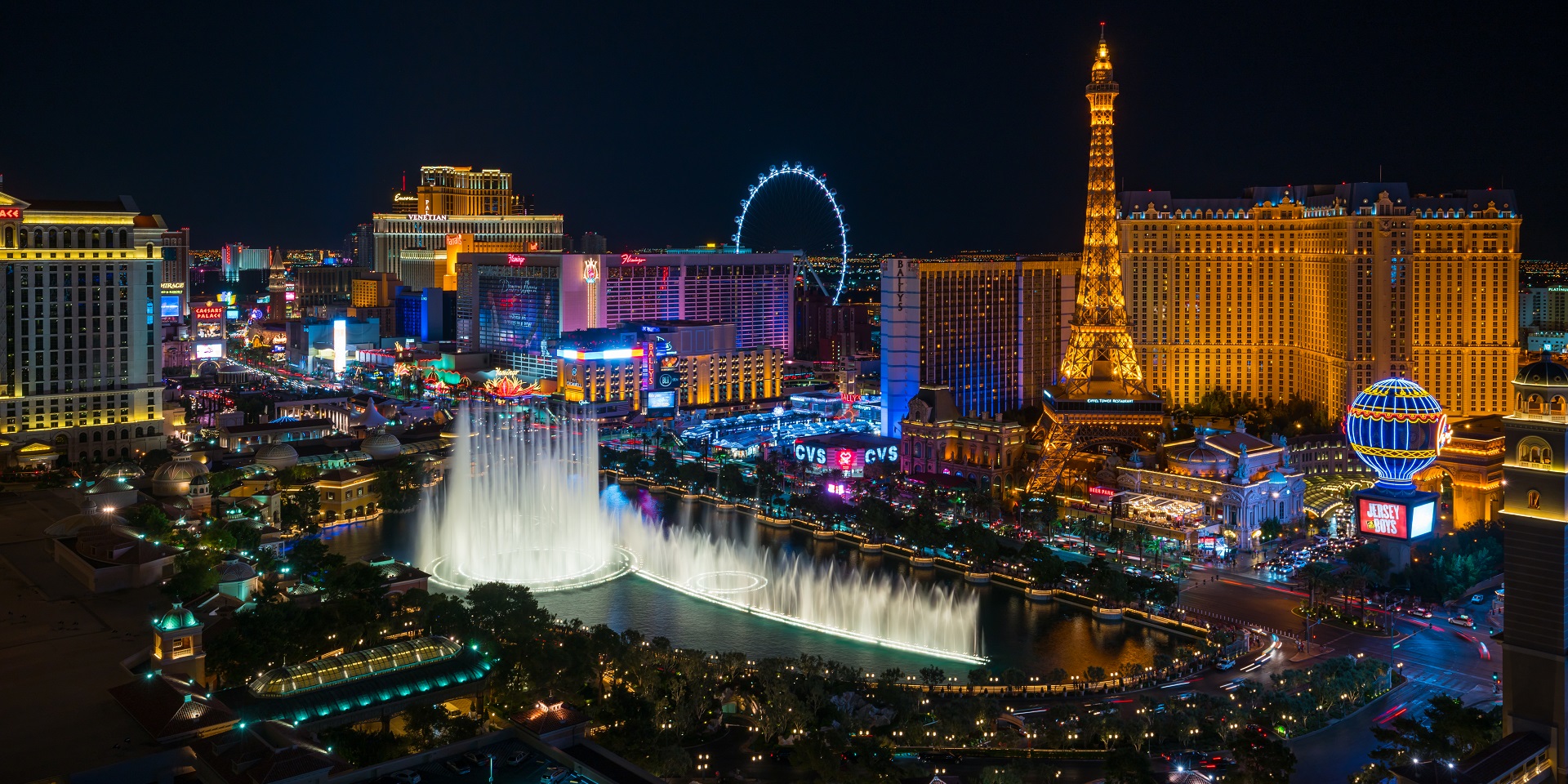At night, the main boulevard in Las Vegas is so crowded that in order to move forward you actually have to push your way through the motley crowd. People of all kinds fill the space already suffocated by the construction conglomerate, which is equally diverse.
From the few elegant-looking buildings to the oversized representations of funfair attractions, everything on the Strip has as a common denominator the flamboyant attempt to attract attention. The result is an eclectic, noisy, and probably abusive aggregate, to which you cannot ascribe any typical urban or cultural rationale. Here, imitations are the representation of assumed exaggeration. Over a few hundred metres, a whole set of kitsch replicas can be found: the Eiffel Tower, the Statue of Liberty, an Egyptian pyramid, the Sphinx, Caesar’s Palace, a spaceship, a volcano, an exotic garden, treasure island, Venice, New York, and many others.
I had expected that, during the few hours of my passing through this huge “amusement park” built for adults, I would observe a lot of exuberance and ecstasy on the faces of those who chose to visit it. I thought people knew why they came here and were excited to have their dream come true. Instead, paradoxically, most people seemed rather apathetic, surprised, or inhibited. It was as if a large proportion of the several thousand people who were passing each other between every two intersections had difficulty adapting to and assimilating what they were seeing.
In the city that offers adults entertainment activities that remind them of their childhood fairs, along with more indecent ones, the visitors seemed rather confused to me. An identity crisis is emerging on the main strip of Las Vegas. Visitors try to adapt to the proposals of the place, to taste its offers, although probably most of them feel somewhat inadequate. And yet, the feeling that this is real fun is intimidating for most of them.
I am not excluding the specialists (addicts) of Vegas casinos and amusements. Essentially, the city is certainly capable of educating its visitors, so it is easy to imagine that the offer becomes attractive or even addictive to those who delegitimise and overcome their confusion. After all, when the Las Vegas brand sells well as a benchmark for fun, people can easily give up their own rational judgments and comply.
The proof that this is rather the case, and not otherwise, is precisely the kitsch I’ve already referred to. Las Vegas is a desert city, quite dirty and not infrequently smelly, with a messy and unkempt mix of opulent and banal buildings, shameful decorations, fantastic characters, street people, people under the influence, and, in general, just about everything. Advertisements and bright signs contribute decisively to the feeling of kitsch. However, when you look at the diverse and wide audience that crowds such a city, you realise that it can only be a question of identity.
Fun City is selling well because the advertising worked well. People come and assume this definition of fun. However, the apathetic faces of the many individuals I saw tell me that people realise that this is not what they need, that here they are just running away from whatever does not allow them to be happy. Las Vegas confirmed to me that people are sad at the circus because their smile needs to come from somewhere else.
Norel Iacob is the editor-in-chief of Signs of the Times Romania and ST Network.



















